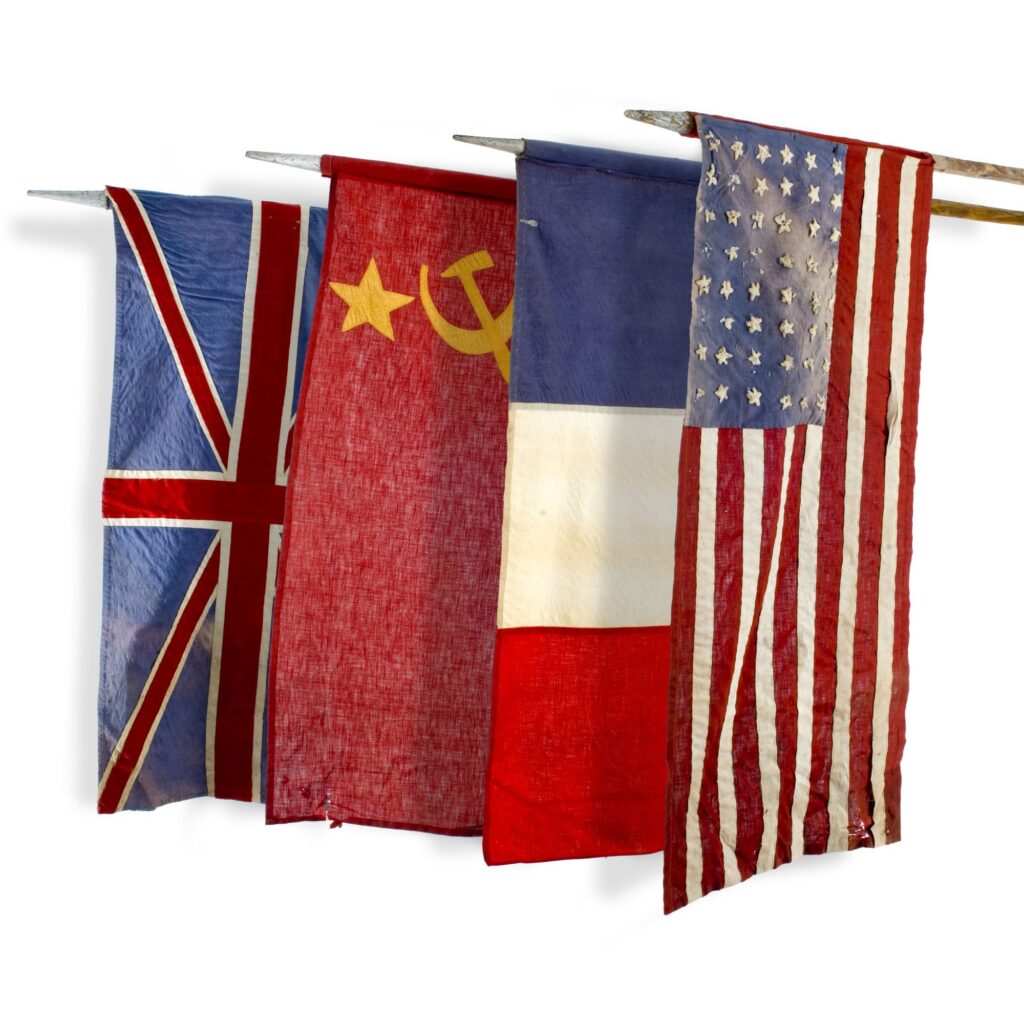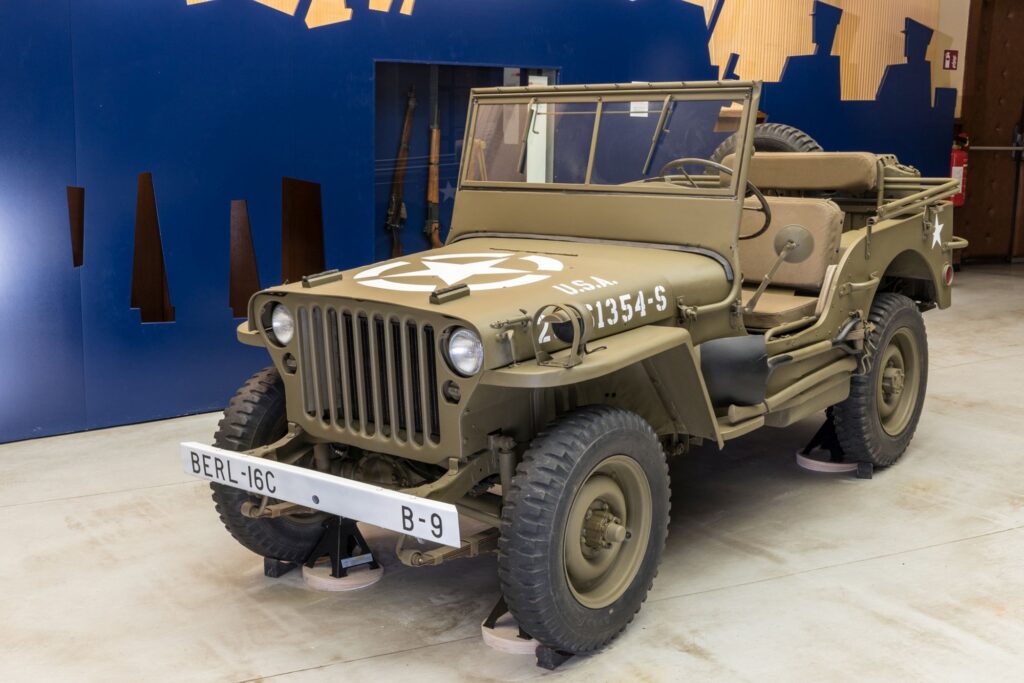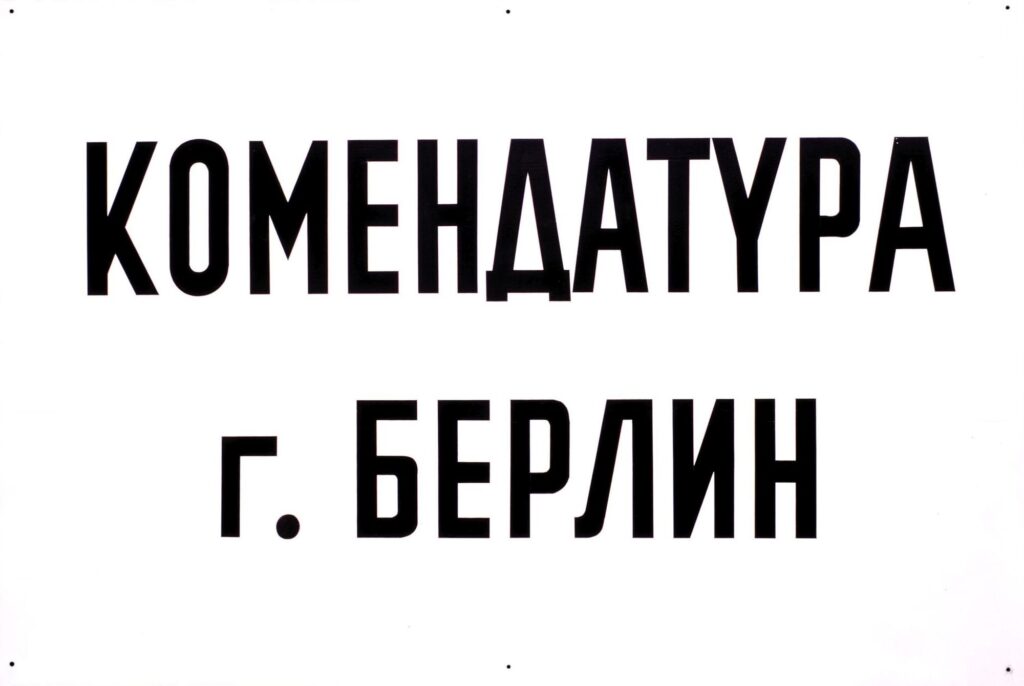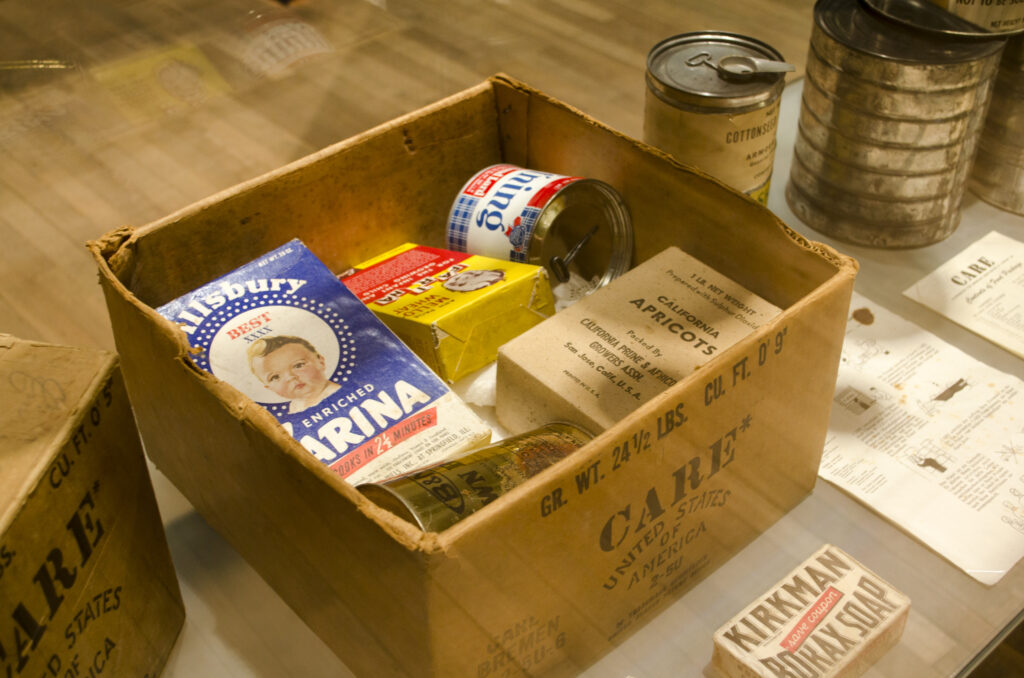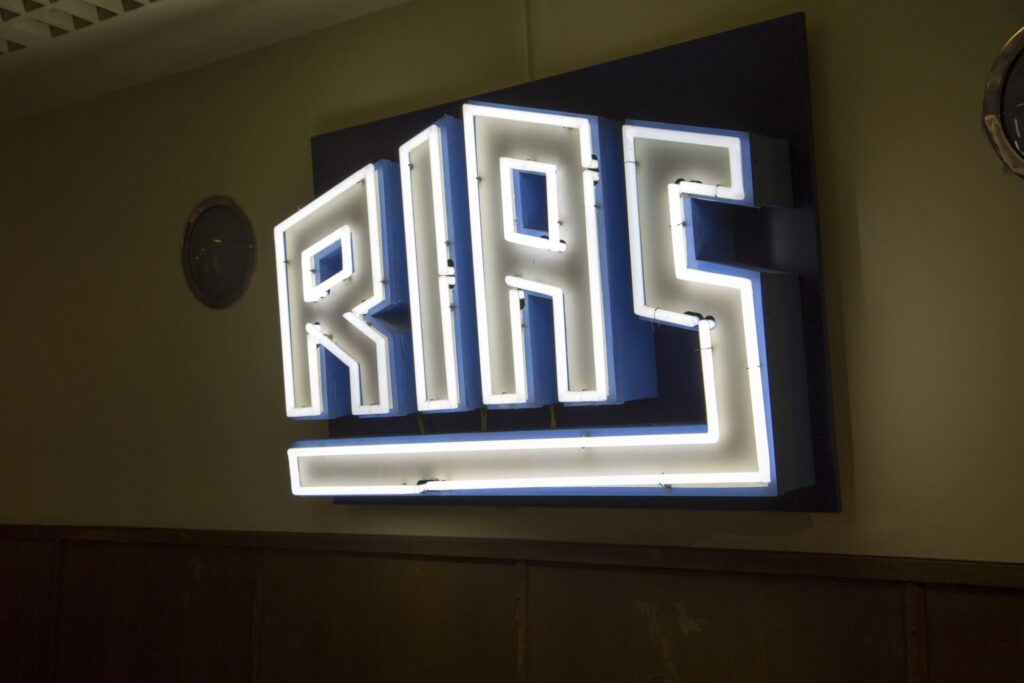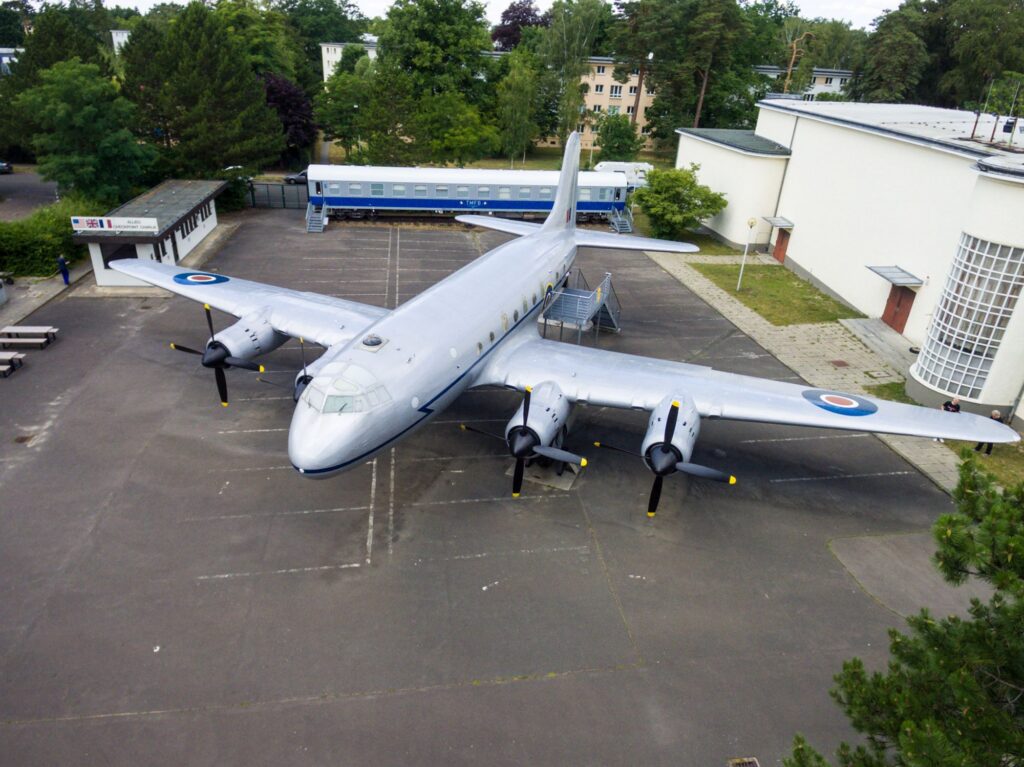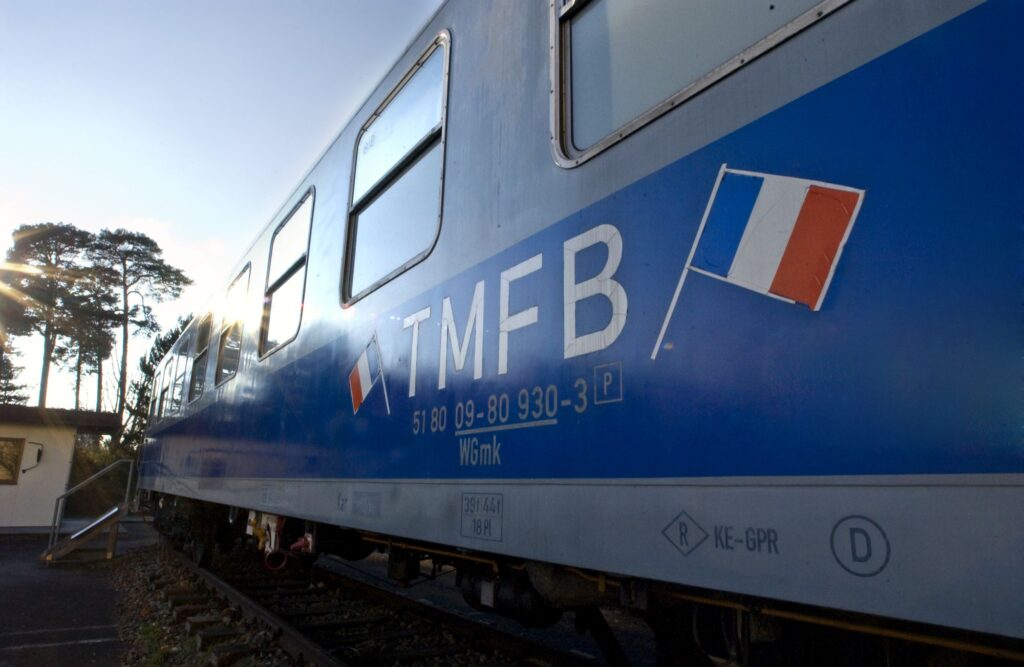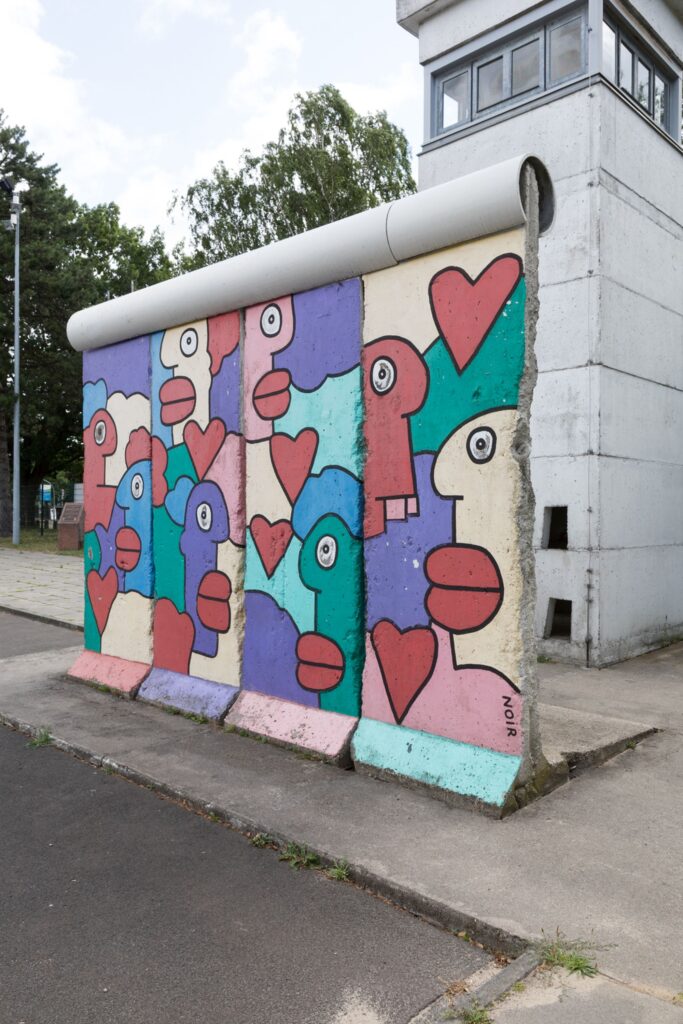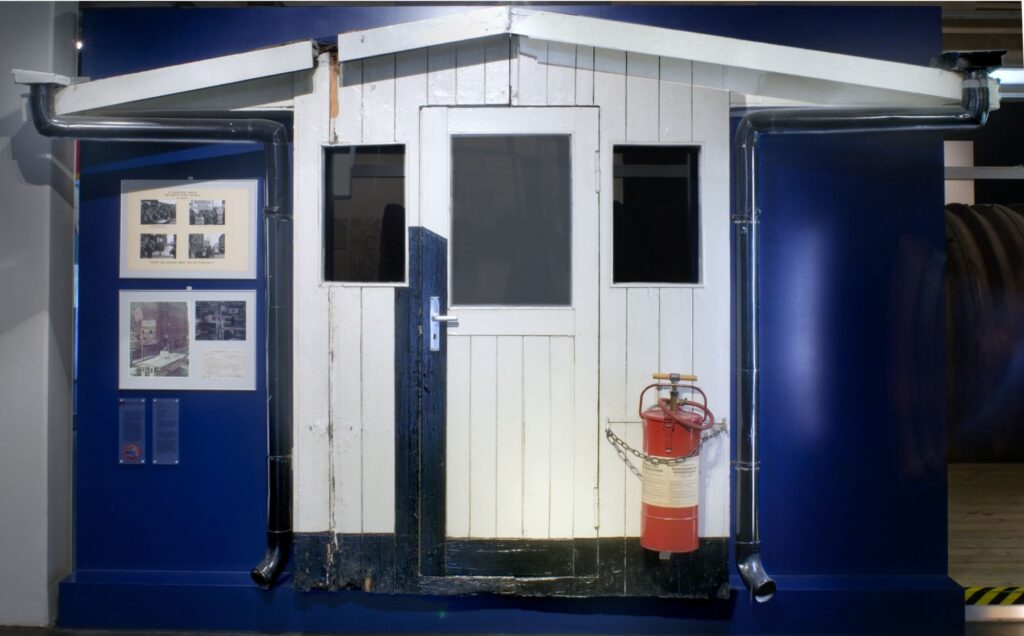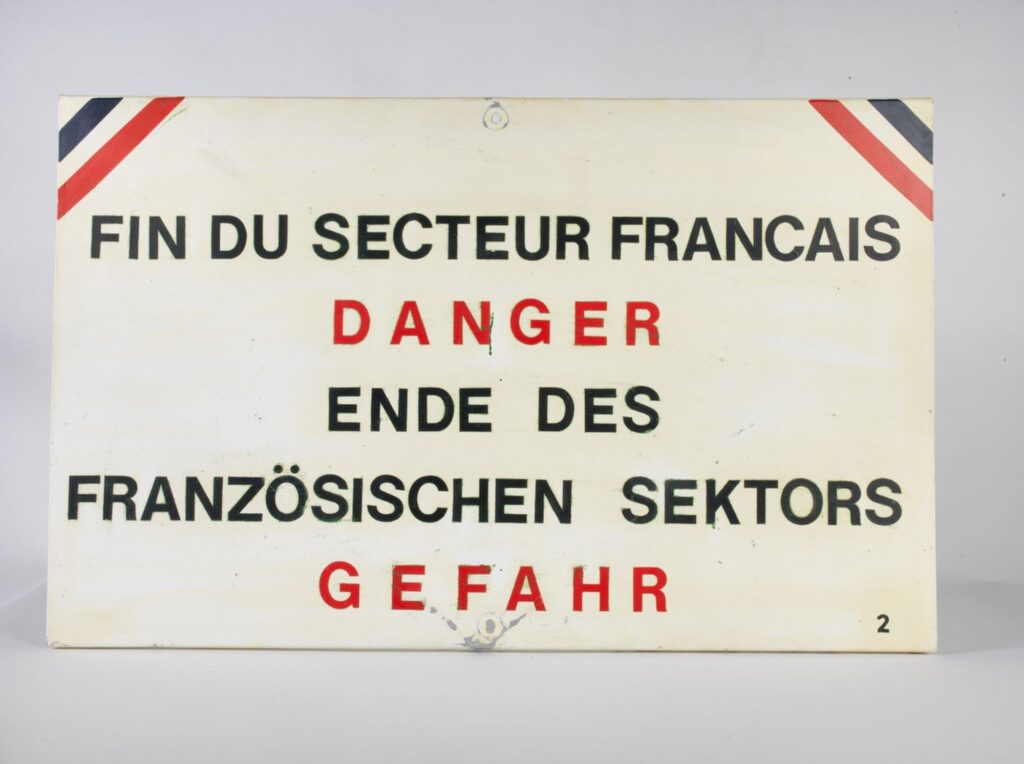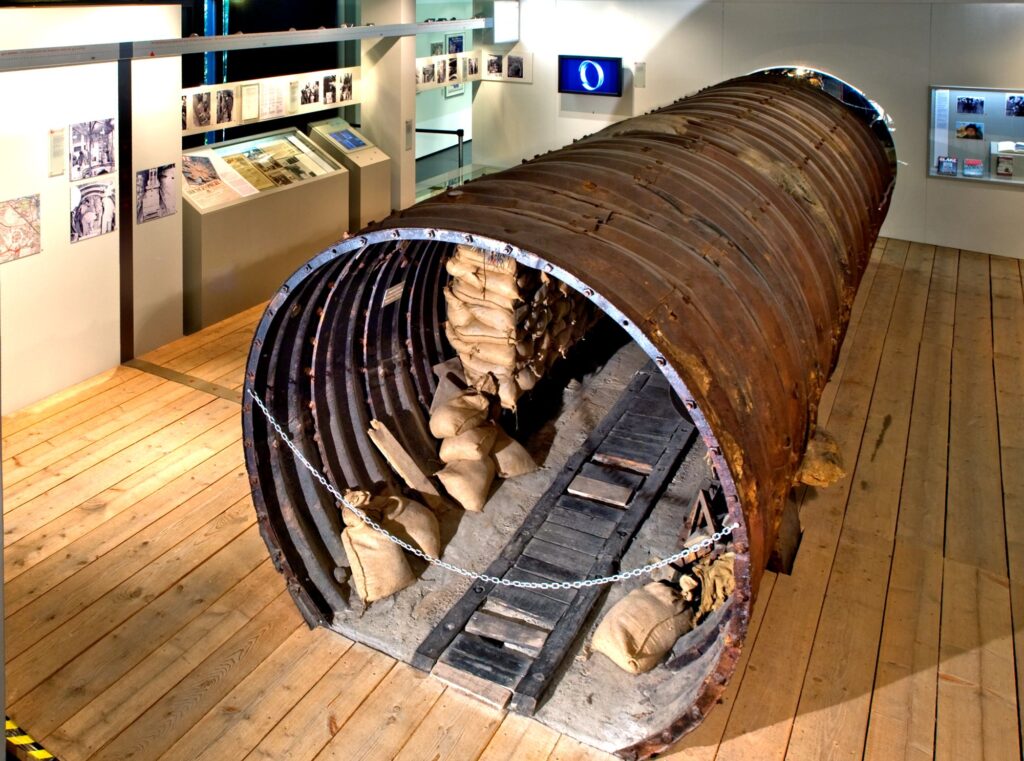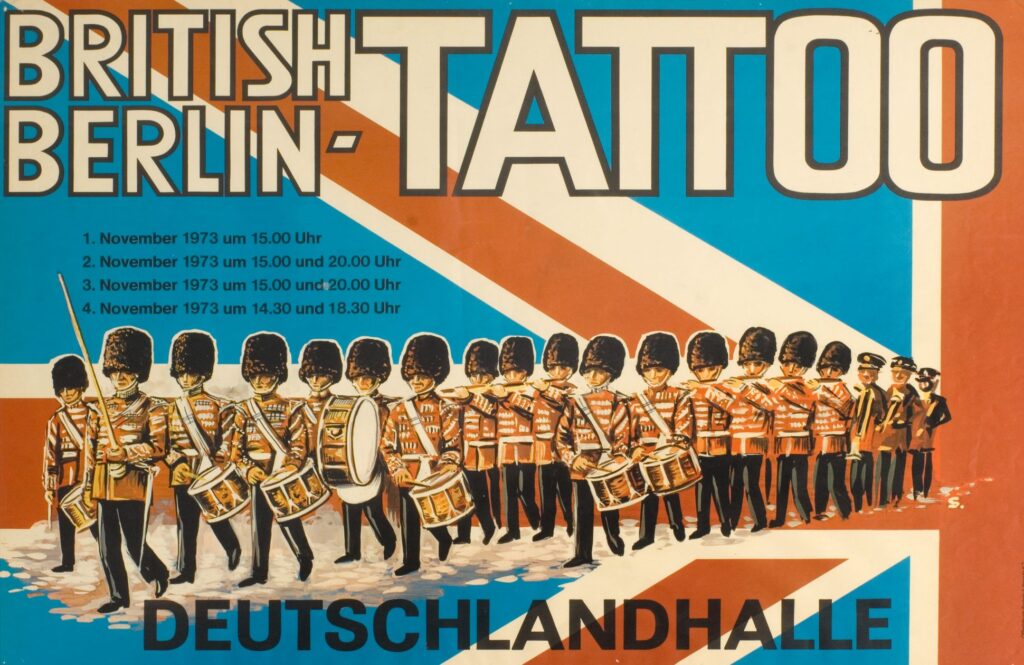In the years 1945 to 1994, the Western Allies put their stamp on political and military events as well as everyday life in Berlin. The Allied Museum explores important chapters of this history. The permanent exhibition “How Enemies Became Friends” is composed of two parts displayed in a historic setting:
the Outpost Theater and the Nicholson Memorial Library. We display our largest objects, including a British Airlift plane, on the Museum grounds between these two buildings.
1945 – 1950
From the end of the war to the Berlin Airlift
The first part of the permanent exhibition in the former American Outpost movie theater explores the years 1945 to 1950. The themes are the Allied victory at the end of World War II, the first years of the occupation, and the process of democratic renewal. The Berlin Airlift during the Soviet blockade of 1948/49 is a central focus.
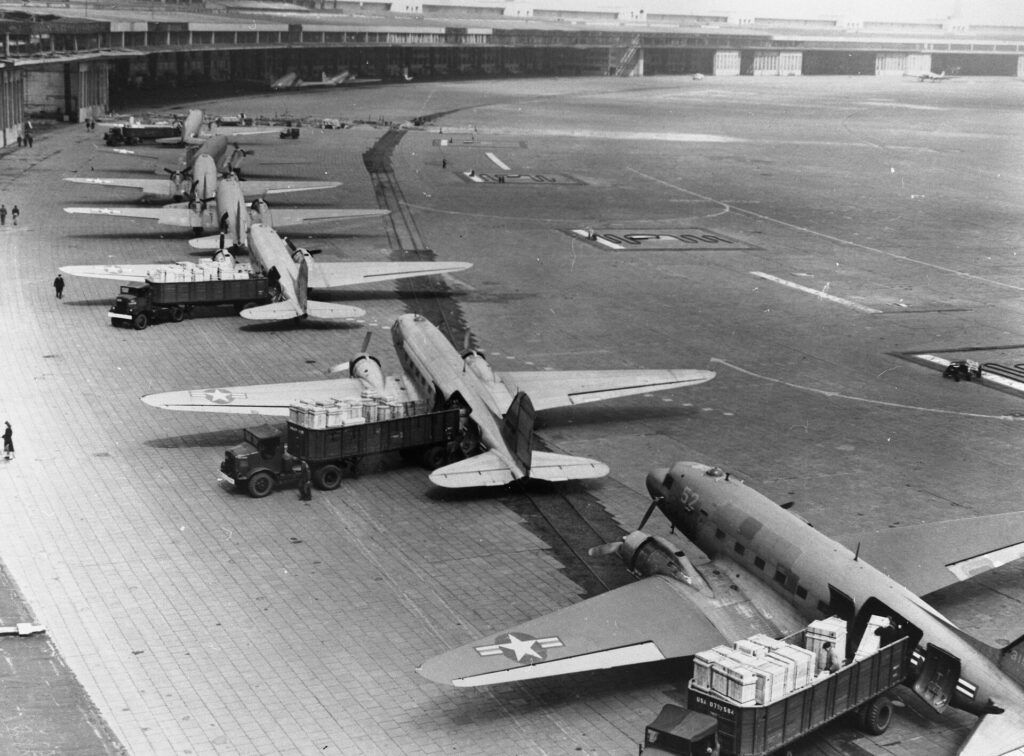
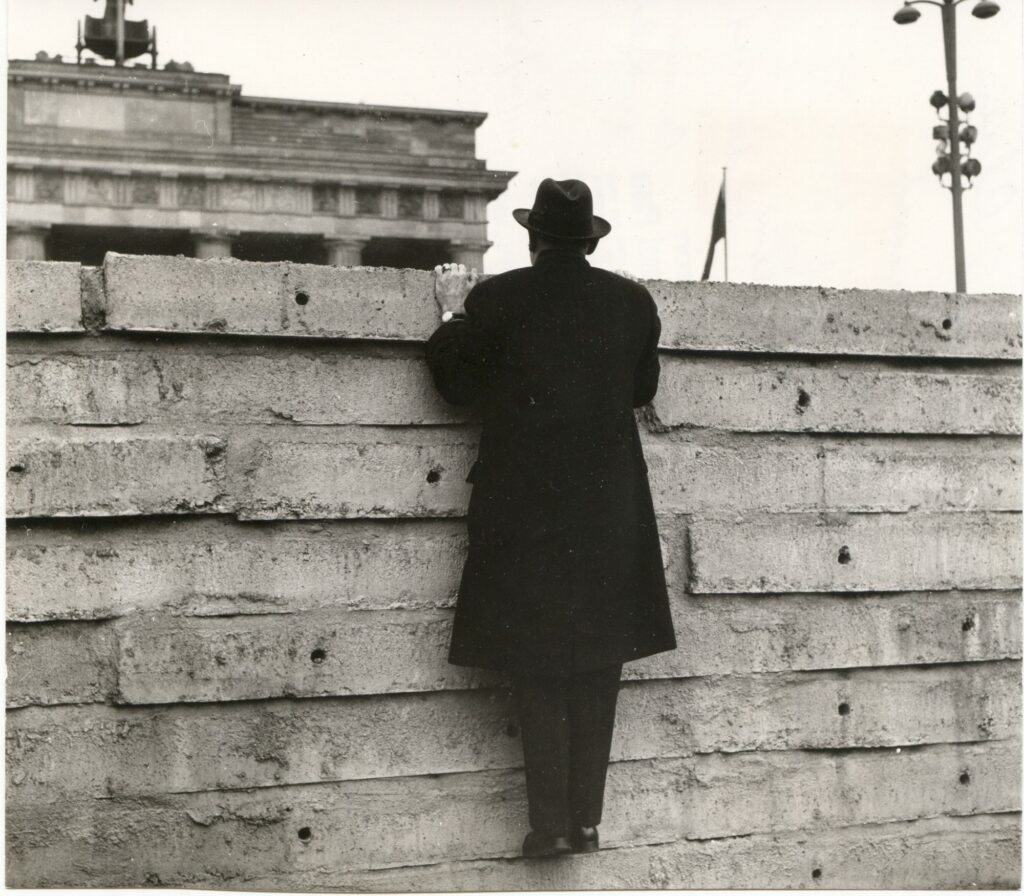
1951 – 1994
Berlin: Scene of the Cold War
The second part of the permanent exhibition in the Nicholson Memorial Library examines the period 1951 to 1994. The focus is on the military confrontation between East and West during the Cold War. Berlin was an especially important scene of rivalries between opposing intelligence services. Apart from everyday life in the garrisons, the exhibition also highlights the events from German unity in 1990 to the withdrawal of the Western forces in 1994.


